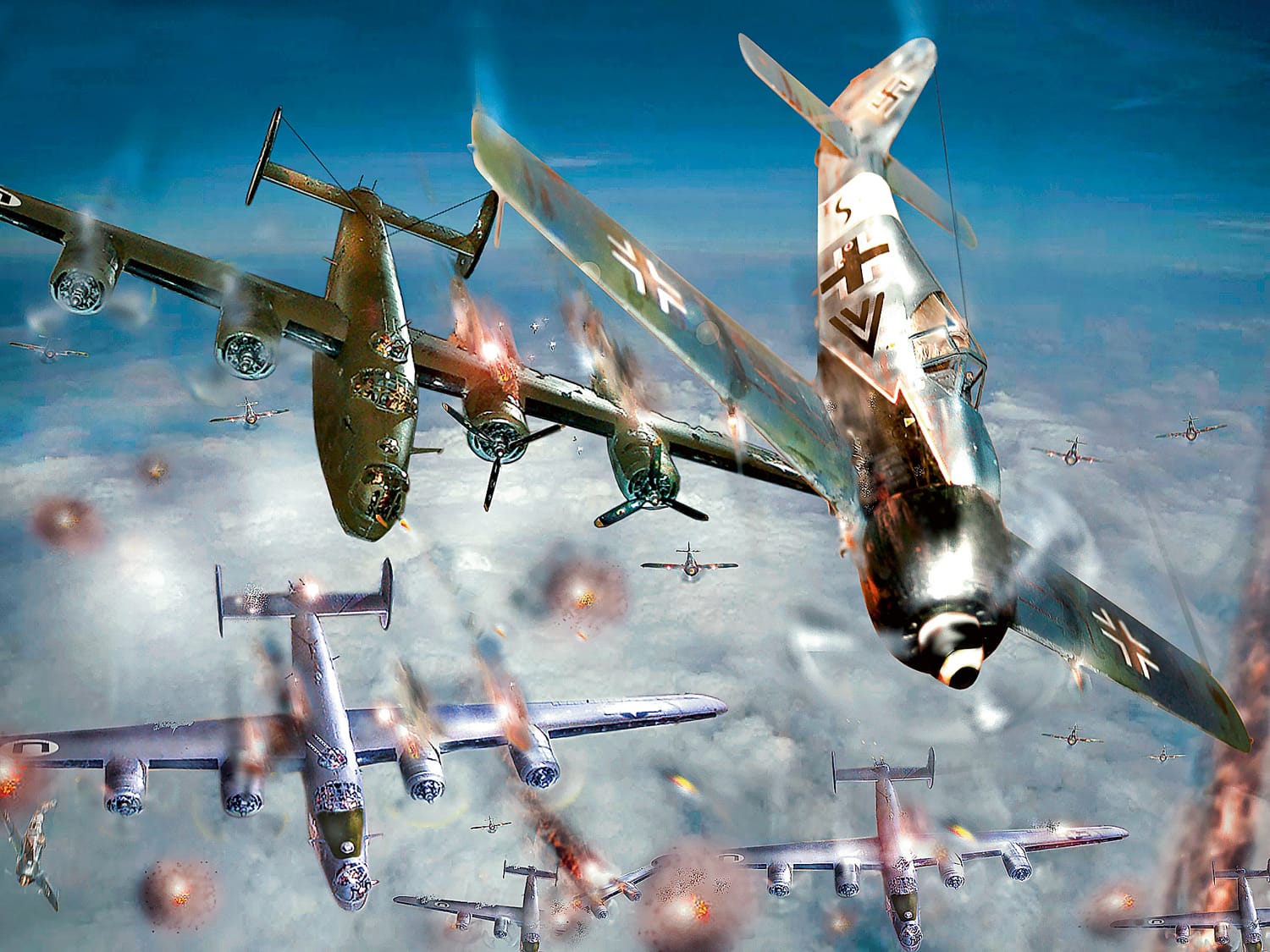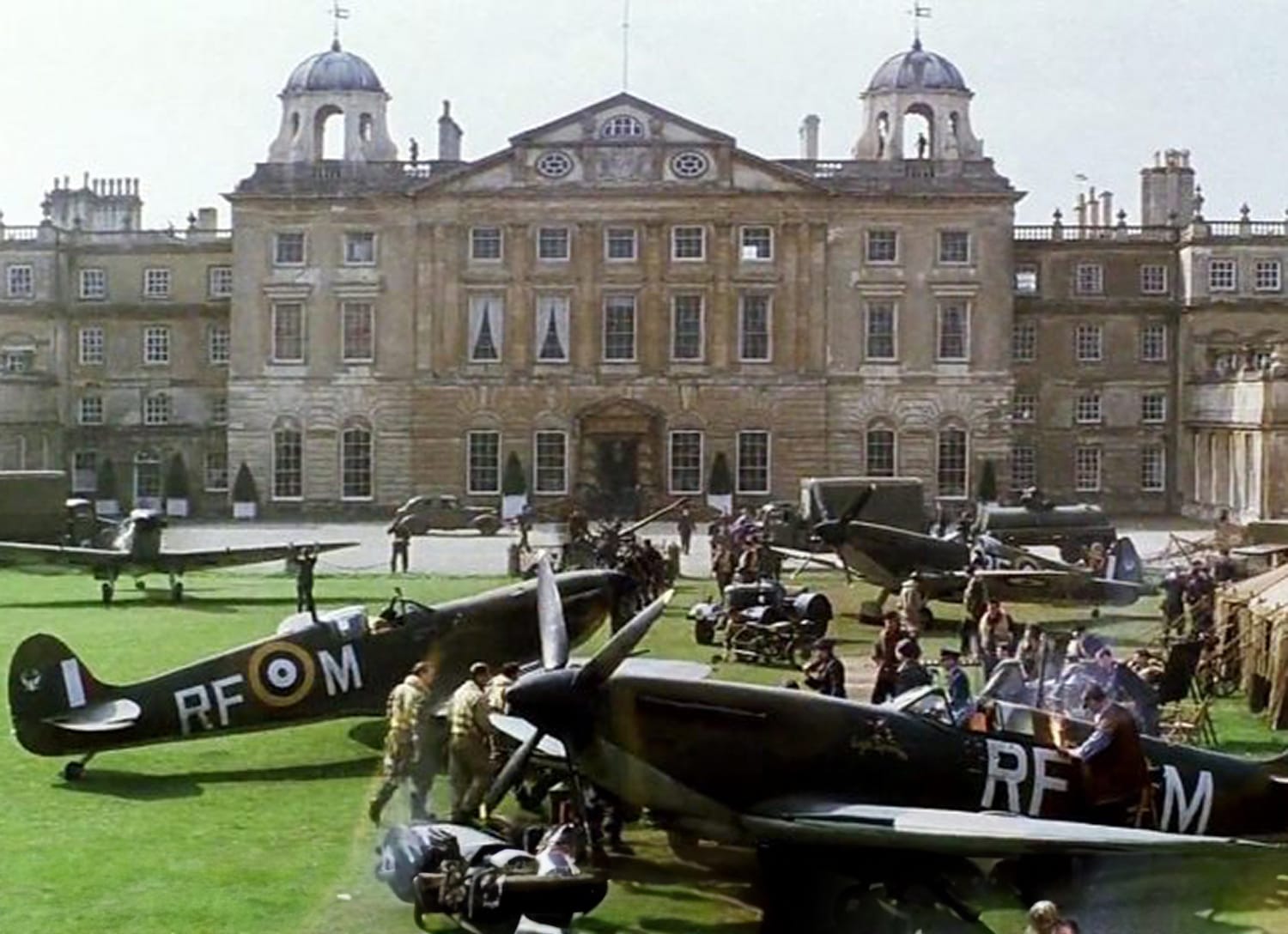What happened on 14th February 1945 to the south of Dresden?
Why were there reports of strafing attacks by American fighter aircraft in the southern vicinity of Dresden?
Did these attacks really take place or not?
There has been a controversial discussion about this topic for many years. The English/American Wikipedia page – of June 2016 – answers the question as follows:
Strafing of civilians has become a traditional part of the oral history of the raids since a March 1945 article in the Nazi-run weekly newspaper Das Reich claimed that this had occurred.
Historian Götz Bergander, who was himself an eyewitness of the raids, found no reports on strafing for 13–15 February, neither by any of the pilots nor by the German military and police. He asserted in Dresden im Luftkrieg (1977) that only a few tales of civilians being strafed were reliable in details, and all were related to the daylight attack on 14 February. He concluded that some memory of eyewitnesses was real, but that it had misinterpreted the firing in an airfight as being deliberately aimed at people on the ground.
In 2000, historian Helmut Schnatz found that there was an explicit order to RAF pilots not to strafe civilians on the way back home from Dresden. He also reconstructed timelines with the result that strafing would have been almost impossible due to lack of time and fuel.
Frederick Taylor in Dresden (2004), basing most of his analysis on the work of Bergander and Schnatz, concludes that no strafing took place, although some stray bullets from an aerial dog fight may have hit the ground and been mistaken for strafing by those in the vicinity.
The official historical commission collected 103 detailed eyewitness accounts and let the local bomb disposal services search according to their assertions: They found no bullets or fragments that would have been used by planes of the Dresden raids.
So much for Wikipedia
Were all the eyewitnesses mistaken?
There remains a somewhat disturbing feeling at the suggestion that, without exception, all those eyewitnesses had deceived themselves, had even lied or had fallen victim to propaganda. There are 164 eyewitnesses, a thought-provoking number.
Their reports have been denied by the American authorities up to this day. The author Dr. Helmut Schnatz dealt with this question in an extraordinarily well-researched manner. The aircraft that took part in the escort mission were the American Mustangs of 20th Fighter Group, 356th FG, 359th FG and 364th FG, all of which had to cover a vast distance from England to central Germany. In addition, there was 352nd FG, which took off from Chièvres, near Brussels, and was therefore based much nearer.
US Field Order 1622a for the mission contained the specific instruction to those fighter squadrons participating to carry out low-level attacks, although only under certain conditions: “Any strafing will be done on withdrawal at leaders discretion if no e/a [i.e. enemy aircraft, author’s note] have been encountered or expected. Only ‘A’ Groups will strafe. Air dromes will not, repeat will not be strafed.“
Therefore, low-level attacks were specifically permitted and scheduled, although categorically only on the return flight and, even then, only if no German fighters were in the vicinity. But of course they were, throughout the bombing attacks on Dresden. It might have been a suicide mission for 146 German fighter aircraft to attack 758 P-51 Mustangs and 44 P-47 Thunderbolts which had complete air supremacy over central Germany, but the German fighters took off all the same. Altogether 78 Messerschmitt Bf 109 G-10s/G-14s/K-4s and Focke-Wulf 190 A-8s of I./II./III. and IV./JG 300, as well as 68 Focke-Wulf 190 A-8s/A-9s and D-9s of I. and II./JG 301, launched attacks on the 802 US escort fighters in addition to the 1,220 heavy, four-engined bombers.
The question remains as to whether, in view of the air battles, strafing attacks by Mustangs on the desperate survivors in and around Dresden were plausible (the Thunderbolts targeted Magdeburg so it did not apply to them). The air battles primarily took place during the bombing attacks. At that time, however, strafing attacks were forbidden since the priority was the protection of the bombers from attacking German fighters, an imperative reinforced on every US fighter in the area via the radio, and also because at least within the target area of Dresden low-level attacks could lead the pilots to run into the hail of bombs themselves. Afterwards, though, in view of the fact that the Mustangs which took off from England were operating at the limit of their range over Dresden, a swift homeward flight would be in the interests of the American fighter pilots. This also applied to the 352nd FG, albeit to a lesser extent. It would have made no sense at all for the US pilots to have dived headlong into the Elbe Valley, Dresden, of all places, which was shrouded in smoke and possibly lined with rapid-fire anti-aircraft guns and, in complete contravention of their orders, abandon their escort duties.
A logbook leads to revealing facts …
What clouds the issue somewhat were the reports of 20th Fighter Group. This fighter group was not present over Dresden during the air raids as it was escorting 91st BG, 381st BG and 398th BG by mistake to Prague, which was where the formation had strayed off course to, and which they also accidentally bombed. The return journey was via Most which was only 30 miles away from Dresden, therefore about six or so minutes flying time for a fighter aircraft without the handicap of a slow bomber in tow. In the US mission report of 20th Fighter Group it stated that: “Shortly after leaving the target ‘A’ Group hit the deck to strafe enemy transportation but found few targets“. Unfortunately, “few targets“ must be viewed within a military framework and interpreted as vehicles, for example. They would not include attacks on cyclists or simply groups of people. That attacks of this nature actually were carried out by British, Canadian and American pilots in the final stages of the Second World War is unquestionable, regardless of whether or not such attacks were plausible in Dresden. And despite the fact that also in these cases the gun camera would be automatically triggered, they were not documented as mentionable successes. But it was normal that strafing attacks as such were documented as carried out. And this was the case with ‘A’ Group of 20th Fighter Group!
„target“ in this case is not Dresden, but Prag!
This fact has been overlooked by all research parties since and leads to the clarification of the matter.
“Shortly after leaving the target“ would therefore refer to the Greater Dresden area since no known low-flyer activity was reported at the time around Prague or Most. Dresden itself as the scene of the low level attacks would, however, be extremely unlikely for it lay clearly to the side (to the north) of the Most – Coburg return route of the 20th Fighter Group. The claimed sporadic attacks on ambulances, for example, in the surrounding area of Dresden might, however, have substance and could correspond to the actual events.
The author received a letter in January 2016, which is included here with the kind permission of the lady who wrote it. This lady was a little girl at the time in question and recounts what she experienced:
Dear Dr Wolf,
I became aware of your book about aerial warfare over Europe when reading an article on the Internet last year. I was particularly interested in pages 491-493, where you discussed possible strafing activities in the area south of Dresden.
On 14.02.1945, my parents and I were south of Dresden walking along the country roads of the southern slopes. From the district of Plauen, where I had experienced the night attacks from a children’s hospital I was in, we were walking eastwards in order to reach public transport in Pirna or Heidenau. Suddenly, we heard the sound of aircraft and the intense rattle of heavy machine-gun fire behind us. These planes flew over us towards the east and later turned to the left – so northwards. There were only a small number of light aircraft, the sound of which was clearly distinguishable from the drone of the night time bombers.
Extensive attacks by large groups of low-flying aircraft were not to be seen and were also never mentioned later in personal conversations with other contemporary witnesses from Dresden.
Further eyewitnesses of events, including those in the area you described, are named in the following Internet contribution: Dresden-dossier 1945.de under “Tiefflieger-Dossier-Augenzeuge 14. Februar” (Low-flying aircraft dossier-eyewitnesses 14 February).
With regard to the evaluation of the US pilots’ report of that day, it must be pointed out that due to one squadron flying to Prague by mistake, much of the documentation was mixed up. So it was not discovered until 2004 that a photo of an alleged bombing over Dresden, that had been published on a number of occasions, was in reality an aerial photo of Prague – that’s what happens in war.
I am delighted to have found the opportunity of incorporating my observations in your research findings.
Best regards
Ingeborg Grau
Ebenfalls interessant…

The final kill of the ace of aces, Erich Hartmann, the most successful fighter pilot of all time
Dangerous encounter in the airIn March 1945 a Russian bombing attack on Prague was reported. Hartmann took off with four Me 109s. A Russian formation…
Weiterlesen
Sturmjäger – cuirassiers of the air
Air battle over Germany: the attack on hydrogenation plants and aircraft factoriesIn the early hours of the morning of 7th July 1944 756 B-17 Flying…
Weiterlesen
That’s how historic air battles get botched by Hollywood
Time and again the ignorance and nonchalance with which even highly renowned directors simply ignore historic details is fascinating. They do this in spite of…
Weiterlesen